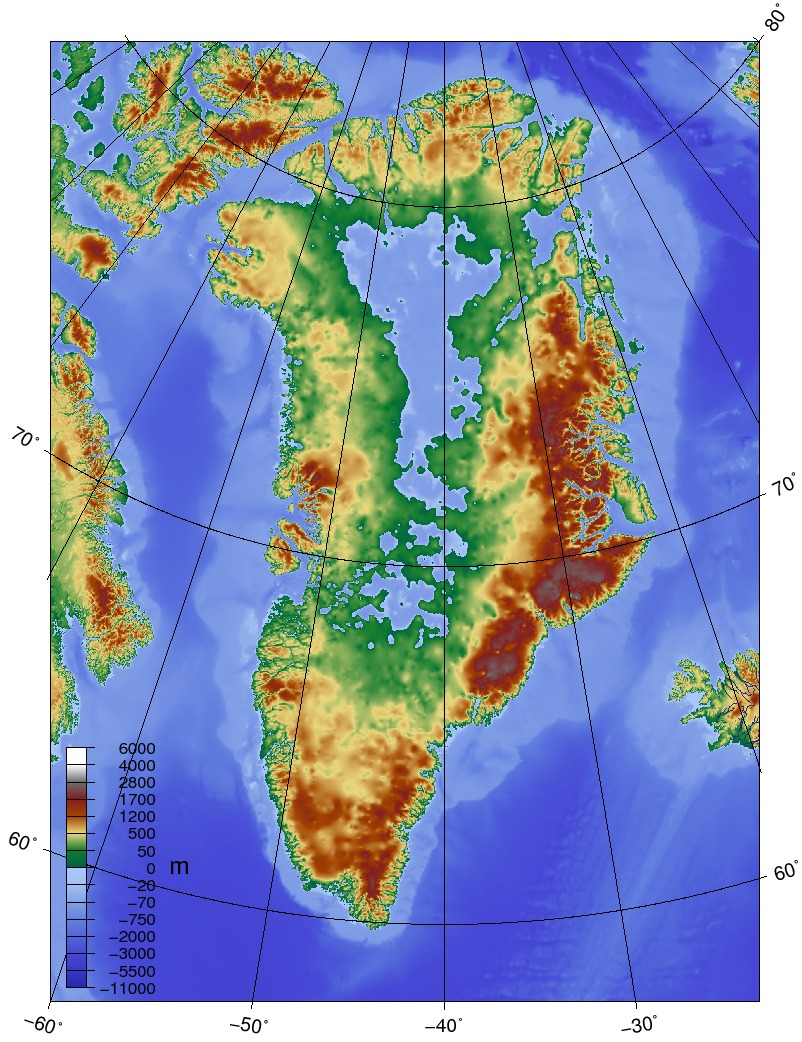Oh, saying big words, Xyrus, don't we. My topographical information is "not correct", how bold.

Let's see what was the information you state as "incorrect", shall we. It was, quote: "it's not exactly a bowl". Now, would you kindly look at the map, and notice that there are few "green", rather wide areas between the central Greenland (which is indeed below sea level) and the ocean, thus making Greenland "a bowl with some parts of its side walls missing", which in my book is indeed "not exactly a bowl":

And if you'd try to remind me that central areas are still lower than those "below 50 meters above sea level" green areas, - oh please, spare me; "details, details". A fracturing kilometers-high ice sheet will cut through dozens of meters of rock, you know. No uphill flow - most of the ice in Greenland is much higher than ~50 meters above sea level. No doubt, some small part of melt water and remains of the ice sheet will remain in low central areas - but it's very few percents of the total ice sheet mass, quite negligible amount. Frankly, i don't think it'd be much practical difference if not 100%, but only say ~95% of Greenland ice sheet would end up in the ocean, eh.
And about time travel. Your argument "Relativistic time dilation is not equivalent to time travel" is correct, but it is also irrelevant, since it does not in any way make time travel impossible. Strictly speaking, we ALL are time travellers - we _move_ (i.e., travel) through time, forward, at a certain pace (and not the slowest pace possible, since we are on Earth, and Earth is a part of Milky Way galaxy, and the latter is moving at a speed which is rather high - sub-relativistic, i'd say). Strictly speaking, relativistic time dilation is _acceleration_ of time travel - not time travel itself. That's strictly speaking, again. In practice, what matters is if some object changes its speed of travel-through-time - increases it, - _relative_ to the rest of mankind, during a particular period of time (as measured by - simplifying, - mankind's clock). This means such an object would effectively "skip" a fraction of said period of time, since for the object, time flows faster, - means, electrons of the object's atoms will make less rotations in compare to electrons of the "rest of mankind" objects.
This is an effect which can be achieved in laboratory, and i wish i would be at a freedom to say more, which i am not.
However, there are still other examples, some are widely known, such as
http://www.huffingtonpost.co.uk/2013/10/23/sergei-krikalev-time-travel_n_4147793.html . The man, by doing his flights, will die ~20ms later than he otherwise would (from the point of view of the mankind, that is), and if this is not time travel, then what it is? =)